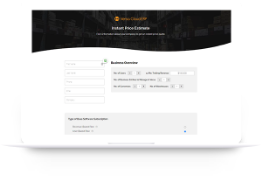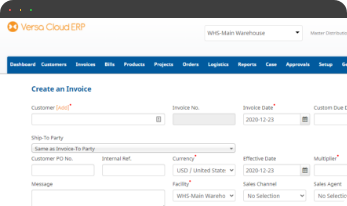ERP Integration: Potential Challenges
As companies grow, selecting the proper enterprise resource planning (ERP) system becomes critically important for efficiently managing increased complexity. While Legacy ERP systems may be suitable for more straightforward needs, their limitations can hinder expanding organizations.
Though effective for basic applications, Legacy ERP systems face challenges supporting broader initiatives. Similar to a vehicle tailored for urban commutes lacking features for longer trips, legacy systems risk inefficiencies from unexpected fees, complex setups, and costly customizations.
Connecting an ERP to external applications and data sources is invaluable for organizations aiming to optimize workflows, unite siloed systems, and expand capabilities. However, integrations also commonly encounter various technical obstacles that can debilitate reliability and performance if not adequately addressed.
Legacy ERP vs Cloud ERP
The comparison between Legacy ERP and Cloud ERP revolves around their deployment models and technological architectures. Legacy ERP systems are typically on-premises solutions that rely on traditional infrastructure and software licensing models. They often require significant upfront investment, ongoing maintenance, and dedicated IT resources for management and upgrades.
On the other hand, Cloud ERP solutions are hosted in the cloud, providing users with access to applications and data via the Internet. They offer scalability, flexibility, and accessibility, allowing organizations to pay for only the resources they use on a subscription basis. Cloud ERP systems often provide faster implementation times, automatic updates, and the ability to access data from anywhere, making them well-suited for modern businesses seeking agility and cost-effectiveness.
The High Costs of Neglected ERP Integration Issues
Like any complex technology project, snags in integrations are inevitable despite the most meticulous planning. However, left unchecked, even occasional anomalies can spiral into catastrophic disruption. Missing a few customer orders due to stuck interfaces leads to immediate lost revenue. The risks extend beyond immediate problems. Failures erode user trust in the affected systems over time, causing reluctance to adopt. Resources get distracted by perpetual fire drills instead of innovation. All integration investments become questionable if the connections crumble under pressure.
Key ERP Integration & Customization Pitfalls
Several patterns account for a majority of integration failures from the mundane to the complex. Here are some of the most widespread culprits with pragmatic fixes to tackle them effectively:
1. Connectivity Issues
Dropped connections between endpoint applications lead to immediate synchronization failures until links get reestablished. Start troubleshooting by validating that network firewalls and proxies are not blocking vital ports or URLs.
Review API endpoint configurations to match active target locations without typos or protocol mismatches. Use online connectivity checking tools to confirm routing hops between servers complete without blockades.
2. Data Inconsistency
One of the stealthiest but most detrimental integration issues is corrupted or outdated data spreading across systems undetected. Often caused by inadequate mapping specifications, software bugs, or lagging schedules, data decay leads to order errors, inventory shrinkage, and trust meltdowns. Resolve by sanity-checking integration logic for loopholes allowing bad data flow through. Institute data monitoring to identify anomalies early before propagating widely. Maintain staging environments for rigorous quality testing of data syncs.
3. Authentication Failures
While less disruptive than connectivity or data issues, expired security tokens and keys hinder automated server-to-server communication necessary for seamless interfaces. Review integration service accounts routinely to keep credentials up to date. Audit permission roles also grant only essential access. Utilize single sign-on centralized administration to simplify rights management across environments.
4. Performance Bottlenecks
With dependencies spanning multiple systems, uptime and speed hiccups in one area cascade rapidly. Set proactive alerts when utilization metrics for databases, servers, APIs, and networks exceed tolerances. Check for unused resource allocations to redistribute. Evaluate scaling needs early as transaction volumes increase over time. Account for internal and external processing factors in capacity planning.
By understanding the common trouble causes, organizations can tailor integration monitoring, testing procedures, training programs, and professional services engagements to mitigate accordingly.
ERP Integration: Advancing Troubleshooting Capability
Skilled users and technical teams able to navigate integration issues independently provide tremendous strategic advantage. Some proven techniques to advance diagnostic capability include:
Leveraging Built-in Tools
- Script debuggers simplify validating custom integration logic.
- Activity audit trails uncover data anomalies or authorization errors.
Monitoring from Endpoints
- Profile integration performance from the external apps’ viewpoint.
- Trace transactions through partner logging from initiation to completion.
- Alert early on endpoint resource constraints before cascading downtime.
Simulating Failures in Lower Environments
- Take down connections, allow data decay, and revoke access in sandboxes.
- Validate team response to crises meets SLAs when applied to real outages.
- Build a playbook for common emergency scenarios based on learnings.
Adopting these troubleshooting habits will transform resolution speeds from days to hours while equipping infrastructure teams with durable capabilities to
The Adaptability of Versa Cloud ERP
While the competition offers robust integration capabilities, the complexity can become cumbersome over time as your business aims to connect more systems, datasets, and applications. The overhead of managing reliable integrations starts to divert focus from core strategic initiatives.
However, if your growth plans depend on integration agility without the perpetual maintenance burden, Versa Cloud ERP warrants consideration as a simpler alternative.
Versa Cloud ERP delivers essential ERP functionality out-of-the-box with 400+ pre-built integrations to best-of-breed business tools. Their library connects easily to existing CRM, commerce, HR, analytics, and payment systems so you avoid complex custom coding.
User-friendly low-code configuration tools also enable business analysts to tailor workflows, entities, and reporting views without IT bottlenecks. Versa’s flexible API framework facilitates adaptable integration development without the reliability pitfalls discussed here.
Additionally, Versa Cloud ERP implementation does not demand expensive professional service fees which keeps costs predictable. Versa’s transparent pricing model allows effortless scaling as integrations expand over time.
Overall, Versa Cloud ERP simplifies intersystem complexity so you can focus on enabling business innovation rather than perpetual integration issue resolution. For organizations that value reliability, flexibility, and simplicity, Versa Cloud ERP deserves a look.
Effectively manage your financials, accounting, inventory, production, warehouse management, order management, and other operations of your Shopify Store workflows with our award-winning ERP.
Let Versa Cloud Erp’s do the heavy lifting for you.
Empower your business with the knowledge to navigate the realm of an Integrated ERP solution. Gain insights, streamline processes, and propel your accounting management to new heights with this comprehensive guide.
With Versa Cloud ERP’s Implementation guide learn how a business can ensure a successful ERP Solution Implementation. Navigate the complexities of implementation with confidence!
A Small Business in the modern day with Omnichannel Retail is complex and requires resources to deliver on its goals and achieve its full potential. To create a small business success story business owners need an ERP Solution that grows with them.
Do Business on the Move!
Make your businesses hassle-free and cut the heavyweights sign up for the Versa Cloud ERP today!!
Join our Versa Community and be Future-ready with us.











